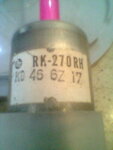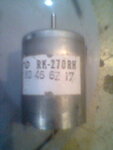rajaram04
Advanced Member level 3
Hello all
Purchased a motor with labelled
------------
RK - 270RH
KD 46 6Z 17
------------
But seller is unable to describe much thing about the unit
but found very high speed when connected to 4v battery.
Well i want to know about the maximum voltage supply we can apply to them motor
here is snapshot >>>>>>>>>>


thanks , . . .
Purchased a motor with labelled
------------
RK - 270RH
KD 46 6Z 17
------------
But seller is unable to describe much thing about the unit
but found very high speed when connected to 4v battery.
Well i want to know about the maximum voltage supply we can apply to them motor
here is snapshot >>>>>>>>>>


thanks , . . .